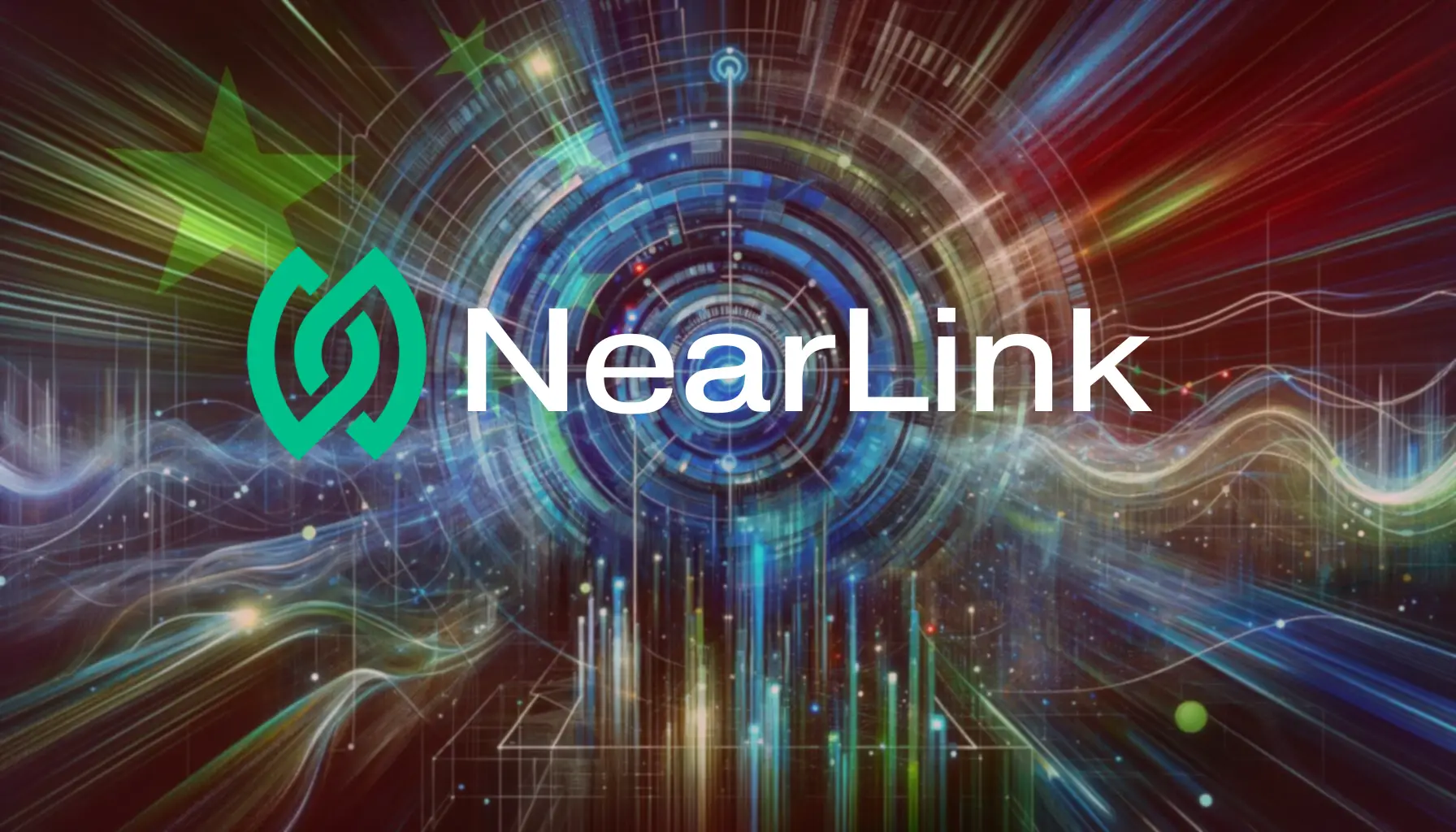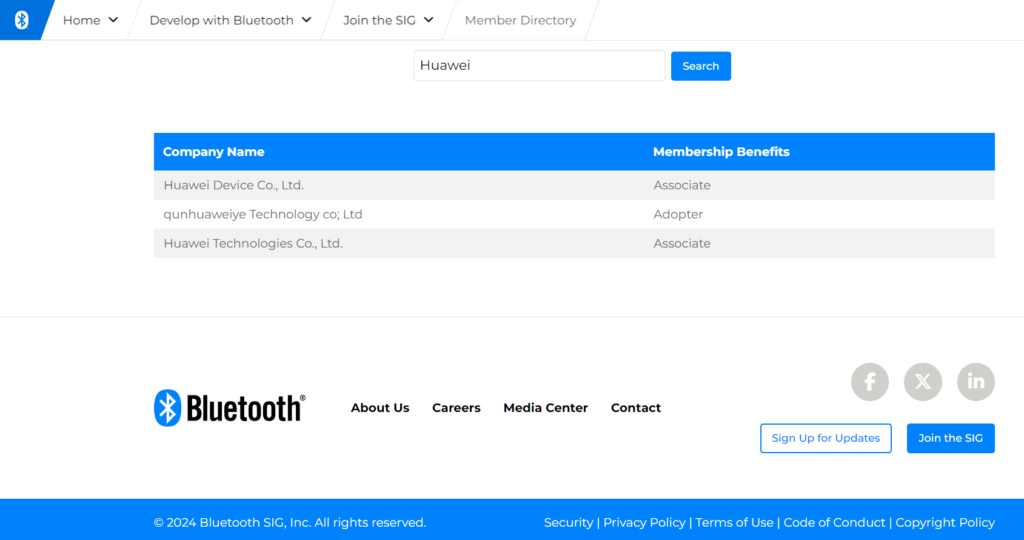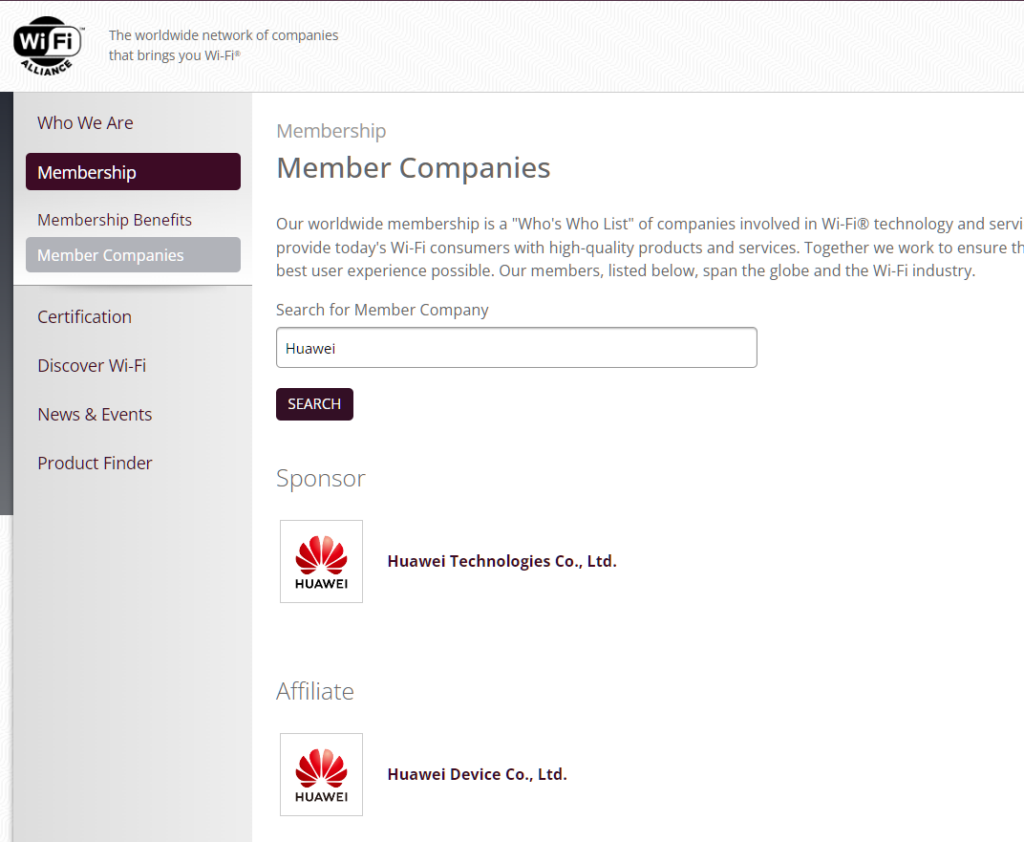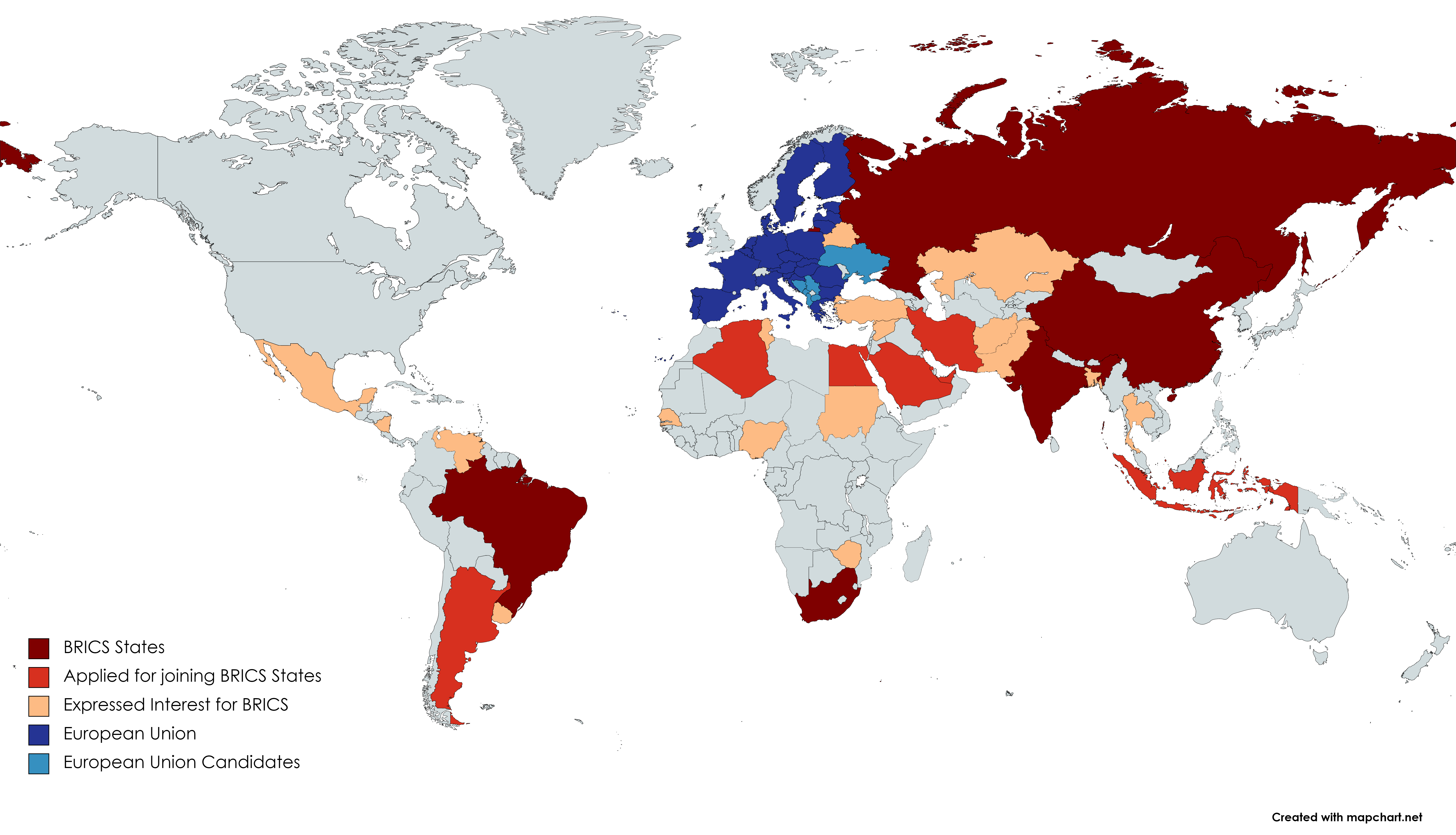I recently became aware of a new technology called NearLink, although new is relative, as it seems to have been around for a few years on paper, but I couldn't find much about it in German-speaking countries (Computer picture, Electronics practice), mainly in the English-language online media. In this article, I would like to discuss NearLink technology and why it could trigger a geopolitical neck-and-neck race.
NearLink - What is it anyway?
In short, NearLink is supposed to be an alternative to the established standards such as Bluetooth and Wi-Fi, but why do we need another standard (I'm just saying XKCD 927)? What should NearLink do differently? WLAN and Bluetooth are enough, and there are other solutions for IoT such as ZigBee, Z-Wave or the fairly new Thread.
Name unclear: NearLink, SparkLink or StarFlash?
One thing I noticed during my research is that they don't seem to be particularly sure themselves what it should actually be called, because while some portals of NearLink write, others write of SparkLinknot unfounded, since the SparkLink Alliance (if not available here the Fallback) developed and publicized this standard, which also writes about SparkLink on its website. Also in a Study on ResearchGate (DOI:10.1016/j.xinn.2023.100386) is called SparkLink. In this article there is a connection between StarFlash and Wi-Fi 7. On a manufacturer page (V-Linktech, WebArchive(because Live website is not available due to timeouts), the only one that could be found is Star Flash as a feature in the chip description, stupidly it is always such a thing with the Chinese translations, because "Flash" can also be called Spark or Blitz, but from the point of view of an electronics engineer, Flash is also the name for a memory, which Flash memoryespecially in the context of a chip manufacturer. And on this Chinese website is called StarFlash than Super Bluetooth, so it's not really clear what you're dealing with in the end, but well, I think with the USB-C variants tablethe West has its own problems.
Performance of NearLink/SparkLink/StarFlash
Various information is available under the name Star Flash, as well as here Data about the layer architecture and how it communicates with different layers.
Since I'm taking the information from the article, I'll stick with StarFlash's wording, but it's the same thing.
In the course of digital transformation, IoT (Internet of Things) technology is establishing itself as the link that connects the world by seamlessly integrating various smart devices into a coherent whole. Against this backdrop, StarFlash stands out as the central hub for connecting the future. This article introduces the three-tier architecture of the StarFlash system, including the basic application layer, the basic service layer, and the StarFlash access layer. In addition, two communication interfaces within the StarFlash access layer are discussed: SLB (Basic Access) and SLE (Low Power Access).
Overview of the three-tier architecture of StarFlash:
Basic application layer:
Implements multifunctional applications for various scenarios and serves sectors such as automotive, home automation, audio-video and more. Provides rich functionalities that enable widespread application of the StarFlash system in various industries.
Basic service layer (Basic Service Layer):
Consists of several basic functional units that provide support for upper layer applications and system management. Provides robust foundational support to ensure system stability and reliability.
StarFlash access layer (StarFlash Access Layer):
Offers two communication interfaces, SLB (Basic Access) and SLE (Low Power Access), each suitable for Wi-Fi and Bluetooth network scenarios.
SLB (Basic Access):
- Strives for high bandwidth, high capacity and high precision.
- Supports single/multiple carriers operating in the 5GHz unlicensed frequency band.
- The bandwidth ranges from 20MHz to 320MHz and supports various modulation schemes.
- Uses technologies such as ultra-short frames (presumably meaning impulses), multi-point synchronization, Asynchronous HARQ etc., to improve communication performance.
SLE (Low Power Access):
- Focuses on low power consumption, low latency and high reliability.
- Uses single carrier transmission, which operates in the 2.4GHz unlicensed frequency band (ISM frequency band).
- Supports bandwidths of 1MHz, 2MHz and 4MHz with different modulation schemes.
- Features include reliable multicast, short-term intercommunication, secure pairing, etc., with energy-saving factors fully taken into account.
The points that NearLink addresses are interesting, so in its current form there should be 2 operating modes, SparkLink Low Energy ("SLE") and SparkLink Basic ("SLB"). SLE is best described as an alternative to Bluetooth Low Energy BLE.
I have created a simple overview table here where you can see the applications and how the technologies differ.
Technology overview table
| Feature | NearLink | Bluetooth | Wi-Fi |
|---|---|---|---|
| Developed by | SparkLink Alliance (NearLink Alliance) | Bluetooth SIG | Wi-Fi Alliance |
| Launch date | November 4, 2022 | May 7, 1998 | September 21, 1997 |
| Areas of application | Smartphones, PCs, audio devices, IoT, IoV | Smartphones, PCs, audio devices, IoT, wireless headphones, mice, keyboards | Internet access, local networks, smartphones, PCs, audio devices |
| Energy consumption | SLE: < 2mA, suitable for IoT SLB: not known |
Varies depending on device and use, BT 5: 35-39mA, BLE: 3mA to 6mA |
Depending on use, approx. 250mA |
| Data transfer rate | SLE: up to 12 Mbit/s, SLB: up to 1.2 Gbit/s |
Up to 1 Mbit/s (BLE), up to 50 Mbit/s (BT 5.0) 1 | 802.11ax: 2.4 Gbps 802.11n: 450 Mbps 2 |
| Latency | SLE: 250 microseconds, SLB: 20 microseconds | Varies, up to 150 milliseconds | 3-20 microseconds |
| Reliability | > 99.999% | High for BLE, varies for other versions | High, depending on environment and setup |
| Max. User access | SLE: 256 users, SLB: 4096 users | 7 active devices per network (BLE: variable, between 12-22 could be found) | Hundreds, depending on network setup |
What stands out here? The power consumption of SLE is lower than Bluetooth Low Energy, which is very suitable for IoT devices as it requires less power than Bluetooth, another advantage is the maximum number of users it can serve simultaneously, SLE can serve 256 in parallel, Bluetooth on the other hand can only serve 7 per network, with BLE there is a little more, but it is only a fraction of SLE.
The latency is also much lower, Bluetooth has a latency of up to 150 milliseconds, SLE is only 250 microseconds.
With SLB, up to 4096 users can be served, which sounds very high to me, so we will only see whether this is realistic in practice when it actually happens.
Compromises are made when it comes to data transfer rates:
SLE: up to 12 Mbit/s,
SLB: up to 1.2 Gbit/s
BLE: Up to 1 Mbit/s
BT 5.0: up to 50 Mbit/s
Wi-Fi: 802.11ax: 2.4 Gbps
Wi-Fi: 802.11n: 450 Mbps 2
As you can see here, SLE delivers a higher data transfer rate than BLE, with lower power consumption, at least on paper. SLB, which is intended as a replacement for Wi-Fi, is in line with Wi-Fi in terms of performance, but cannot keep up with the fastest WLAN standard 802.11ax with 2.4 Gbps, but still achieves good performance with 1.2 Gbps.
What is still to come?
In the SparkLink Alliance study, there is this one picture that shows where the journey of NearLink/SparkLink will or could go:
I think this picture shows that SparkLink / NearLink wants to be nothing less than revolutionary, and Bluetooth and Wi-Fi as a single, new standard, wants to show that it can cover everything.
From smartphones, gadgets, sensors, smart cars (IoV (Internet of Vehicles)), smart homes, printers, switches, all the way to smart manufacturing, i.e. industrial use, all connected to each other with one technology.
The fact that SLB is not the highest of feelings is also shown by the name, SLB, SparkLink Basic, i.e. the basics, but what comes next? Apparently they are still working on it, because the ambition to be able to network entire cities and systems with one technology is challenging.
You can find out how the whole thing works here in the Performance Evaluation of SparkLink Basic Radio Access Technology from the SparkLink Alliance, it is quite theoretical and technical, but worth a look.
NearLink is supposed to be a solution that is not actually needed, but is not unfoundedly politically driven. As is often the case, the reason for this lies with the USA and sanctions.
Background
In recent years, the US has increased sanctions against China, both under the Trump administration and the Biden administration. Here are a few excerpts:
- China's Huawei restricted from using U.S. suppliers (May 17, 2019)
- Sanctions by the Numbers: Spotlight on China (December 2, 2020)
- China plays the sanctions game, anticipating a bad US habit (December 14, 2020)
- US Sanctions Against Chinese 5G: Inconsistencies and Paradoxical Outcomes (October 2021)
- China's Huawei slows its long decline under U.S. sanctions as revenues improve (October 27, 2022)
- China's Huawei sees 'business as usual' as U.S. sanctions impact wanes (December 30, 2022)
These are just a few articles that highlight the US sanctions against China's technology industry and Huawei.
What does this have to do with NearLink?
This is due to the fact that the sanctions, Huawei restricted in access to US technologies will.
Although Huawei is listed as a member of the Wi-Fi Alliance as well as the Bluetooth SIG, it appears that China is still planning ahead due to the sanctions and is probably assuming that it will be excluded from these committees at some point and thus fall behind technologically.
So Huawei is still on the committees, but I suspect that this development is being strategically promoted by NearLink and the founding of the SparkLink Alliance in 2022, they want to play it safe and make themselves independent of the USA.
What does this mean for the end user?
The advantage for consumers would be that newer devices with NearLink would be able to communicate with each other interoperably, so there would be no need to switch between Bluetooth and WLAN. Other advantages are that you would have to pay less attention to which communication standards are supported when purchasing devices.
But it can also go in the other direction, so in the event of sanctions by the EU or the USA, it can lead to products from China using this standard for fear of espionage, because the SparkLink committee is based in China and outside the control of the USA and Europe, so they could also install backdoors etc., this can lead to devices from China becoming rarer. At least I can't imagine it happening, because they are too dependent on China.
My opinion
I think that NearLink will find its place on mobile devices, it won't happen from now on, but it will come, what I hear from China is that they are planning for the long term and not just thinking about it for a short time. We will know soon enough whether it will stay with the name NearLink or SparkLink when more portals report on it. It won't replace Wi-fi and Bluetooth any time soon, but it will bring about new innovations and increase competition because more competition will stimulate the market.
Since I am a Xiaomi user, I will probably have to deal with NearLink for the first time sooner or later, then I can test how good it really is.
Further sources:










